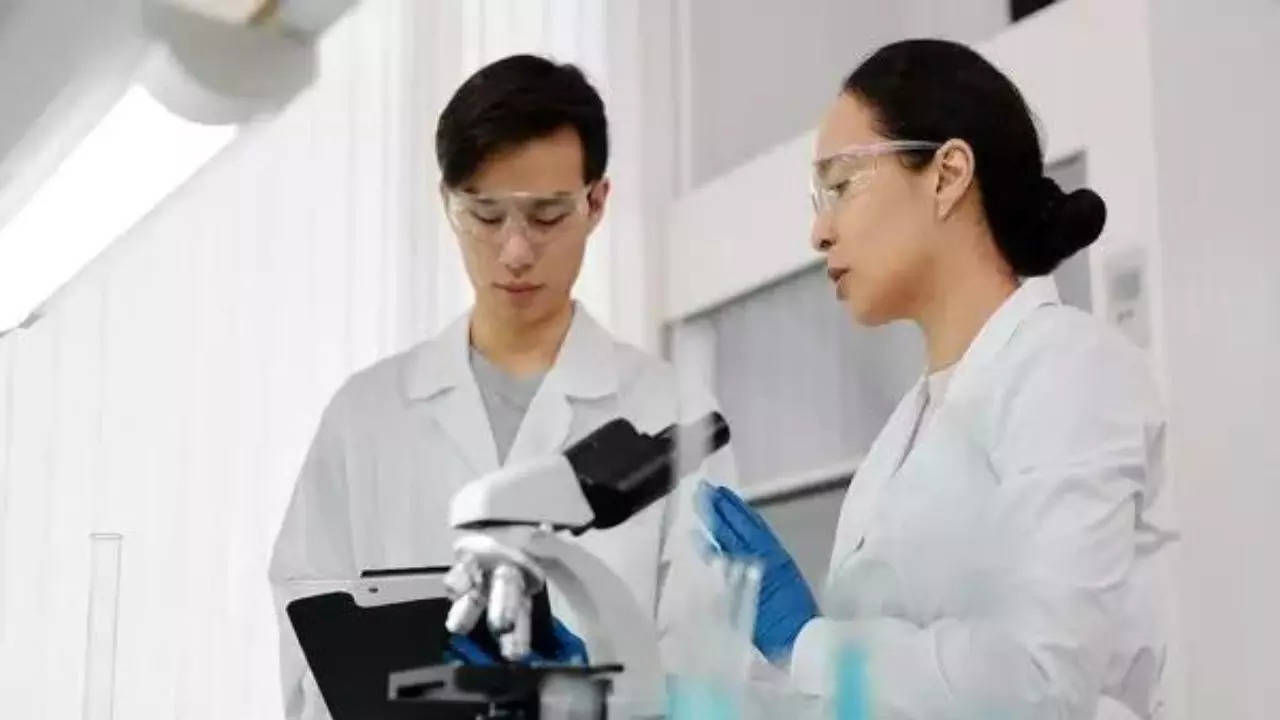Researchers reveal genetics of near healthy tissue help detect lung cancer’s return



According to the US Centres for Disease Control and Prevention, lung adenocarcinoma, which originates in alveolar epithelial cells and makes up approximately one-third of all lung cancercases in the country, is the subject of the current study.When tumours are surgically removed early in the course of the disease, most patients recover; but, in around 30% of instances, cancer cells that were previously present return and can be fatal. As a result, researchers have long looked for biomarkers, or recurrence predictors, that could lead to more.
The study included 147 men and women treated for early-stage lung cancer. It explored the utility value of the transcriptome, the complete set of RNA molecules that tell cells what proteins to make. Analysis of RNA collected from apparently healthy tissue adjacent to tumor cells accurately predicted that cancer would recur 83% of the time, while RNA from tumors themselves was only informative 63% of the time.
“Our findings suggest that the pattern of gene expression in apparently healthy tissue might serve as an effective and until now elusive biomarker to help predict lung-cancer recurrence in the earliest stages of the disease,” said study co-lead author Igor Dolgalev, PhD.
Publishing online on November 8 in the journal Nature Communications, the investigation is the largest to date comparing genetic material from tumors and adjacent tissue and their ability to predict recurrence, says Dolgalev, an assistant professor in the Department of Medicine at NYU Grossman School of Medicine and a member of Perlmutter Cancer Center.
For the study, the research team collected almost 300 tumor and healthy tissue samples from lung cancer patients. The study investigators then sequenced the RNA from each sample and fed these data, along with whether or not recurrence occurred within five years of surgery, into an artificial intelligence algorithm. This program used a technique called “machine learning” to build mathematical models that estimated recurrence risk.
The findings revealed that the expression of genes associated with inflammation, or heightened immune-system activity, in adjacent, apparently normal lung tissue, was especially useful for making predictions. This defensive reaction, the study authors say, should not be present in tissue that is truly healthy and may be an early warning sign of disease.
“Our results suggest that seemingly normal tissue that sits close to a tumor may not be healthy after all,” said study co-lead author Hua Zhou, PhD, a bioinformatician at NYU Grossman and a member of Perlmutter Cancer Center. “Instead, escaped tumor cells might be triggering this unexpected immune response in their neighbors.”
“Immunotherapy, which bolsters the body’s immune defenses, might therefore help combat tumor growth before it becomes visible to traditional methods of detection,” added study co-senior author and cancer biologist Aristotelis Tsirigos, PhD.
Tsirigos, a professor in the Department of Pathology at NYU Grossman and a member of Perlmutter Cancer Center, cautions that the investigation worked backwards, training the computer program using cases already known to have had disease return.
As a result, the study team next plans to use the program to prospectively assess recurrence risk in patients newly treated for early-stage lung cancer, says Tsirigos, who is also director of NYU Langone’s Applied Bioinformatics Laboratories.
function loadGtagEvents(isGoogleCampaignActive) { if (!isGoogleCampaignActive) { return; } var id = document.getElementById('toi-plus-google-campaign'); if (id) { return; } (function(f, b, e, v, n, t, s) { t = b.createElement(e); t.async = !0; t.defer = !0; t.src = v; t.id = 'toi-plus-google-campaign'; s = b.getElementsByTagName(e)[0]; s.parentNode.insertBefore(t, s); })(f, b, e, 'https://www.googletagmanager.com/gtag/js?id=AW-877820074', n, t, s); };
function loadSurvicateJs(allowedSurvicateSections = []){ const section = window.location.pathname.split('/')[1] const isHomePageAllowed = window.location.pathname === '/' && allowedSurvicateSections.includes('homepage')
if(allowedSurvicateSections.includes(section) || isHomePageAllowed){ (function(w) { var s = document.createElement('script'); s.src="https://survey.survicate.com/workspaces/0be6ae9845d14a7c8ff08a7a00bd9b21/web_surveys.js"; s.async = true; var e = document.getElementsByTagName('script')[0]; e.parentNode.insertBefore(s, e); })(window); }
}
window.TimesApps = window.TimesApps || {}; var TimesApps = window.TimesApps; TimesApps.toiPlusEvents = function(config) { var isConfigAvailable = "toiplus_site_settings" in f && "isFBCampaignActive" in f.toiplus_site_settings && "isGoogleCampaignActive" in f.toiplus_site_settings; var isPrimeUser = window.isPrime; if (isConfigAvailable && !isPrimeUser) { loadGtagEvents(f.toiplus_site_settings.isGoogleCampaignActive); loadFBEvents(f.toiplus_site_settings.isFBCampaignActive); loadSurvicateJs(f.toiplus_site_settings.allowedSurvicateSections); } else { var JarvisUrl="https://jarvis.indiatimes.com/v1/feeds/toi_plus/site_settings/643526e21443833f0c454615?db_env=published"; window.getFromClient(JarvisUrl, function(config){ if (config) { loadGtagEvents(config?.isGoogleCampaignActive); loadFBEvents(config?.isFBCampaignActive); loadSurvicateJs(config?.allowedSurvicateSections); } }) } }; })( window, document, 'script', );
Recent Posts
'मुख्यमंत्री कोविड-19 बाल सेवा योजना' के लिए नहीं है बजट? अब मंत्री नरेंद्र पटेल ने किया ये दावा
<p style="text-align: justify;"><strong>Madhya Pradesh News Today:</strong> भारत सहित पूरी दुनिया ने 3 साल वैश्विक महामारी…
Inside Hina Khan’s Pre-Birthday Celebrations With Rocky Jaiswal And Mother In Goa
Hina Khan’s birthday is on October 2. (Photo Credits: Instagram)From a stunning view of her…
Swiggy IPO Gets Sebi Approval: All You Need to Know About Rs 11,000-Crore Issue
Food and grocery delivery major Swiggy has received markets regulator Sebi’s clearance to launch its…
‘Imprints of Make in India visible everywhere’: PM Modi lauds 10 years of flagship initiative | India News
NEW DELHI: Prime Minister Narendra Modi on Wednesday lauded the efforts of each and every…
Waqf Amendment Bill JPC 1 Crore Emails Nishikant Dubey VHP Vinod Bansal Said it Email Jihad | वक्फ बिल पर 1 करोड़ से ज्यादा सुझाव: VHP बोली
Waqf Amendment Bill Email: वक्फ संशोधन बिल पर संयुक्त संसदीय समिति (जेपीसी) को सुझाव के लिए…
Georgia Meloni and Elon Musk date truth behind the viral photos
Meloni And Musk Viral Photos : दुनिया के सबसे अमीर शख्स एलन मस्क ज्यादातर किसी…
